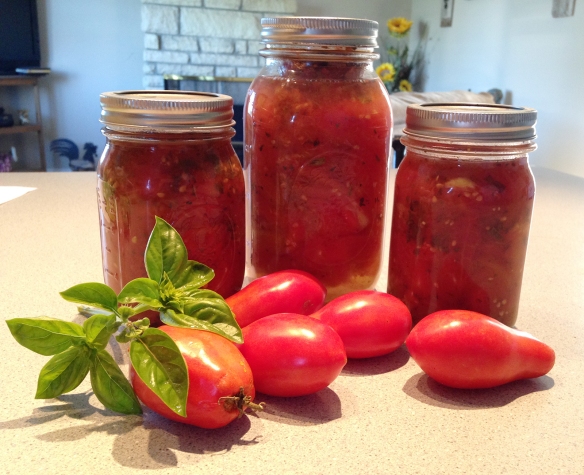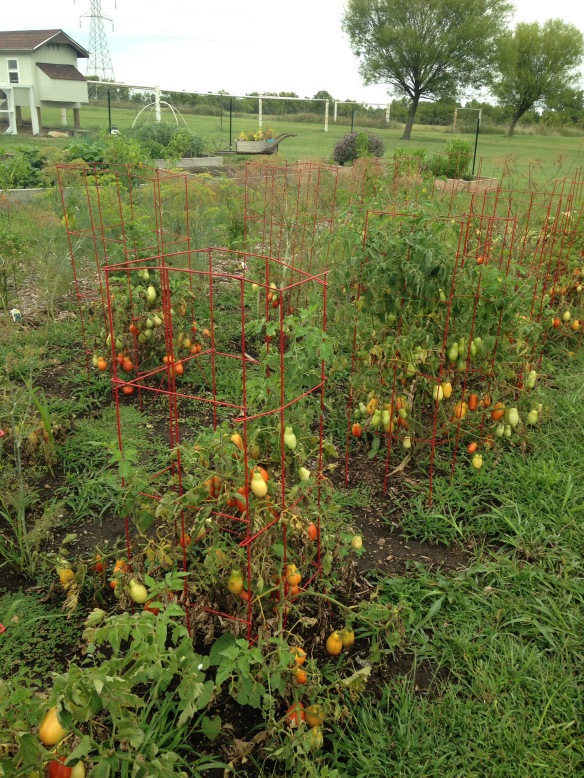
I don’t know about you, but I have tomatoes everywhere right now. My vegetable baskets are filled with them, they are on the kitchen counters and more are ripening by the day (at least they would if the sun would ever come back out here).
This is a good situation to be in though because last year my tomato plants lagged on producing tomatoes so our pantry was getting a little low on pasta sauce and other tomato-based items. It should be fully stocked after this year though.
I grow primarily Roma tomatoes for canning, with a few cherry tomatoes and one slicing tomato plant.
Last winter, I wrote about a new experiment I was trying with my greenhouse and starting all of my tomatoes from seed. I was thinking about that blog just the other day and realized I hadn’t followed up on it yet.
When I first put the tomatoes out, I was a little concerned because I had transplanted them into the largest pots I had for them, but they were still getting very root bound. The temperatures just weren’t warm enough yet for me to be comfortable putting them outside. So instead, I gave them the best care I could in the greenhouse but the leaves were starting to wilt just a little.
Finally, it was time to plant them. I kept my fingers crossed that they would all bounce back. After a few weeks in the ground, they did just that. All of my plants except the one that something ate and I had to replace, really took off once their roots had room to spread out. They grew into nice sized plants and they are producing more tomatoes than I think I have ever had, while many people in the area are having smaller amounts of tomatoes this year.
I know that I will be starting my tomatoes from seed again next year – but maybe a couple of weeks later in the year. I want to see if I have the same results two years in a row. If so, I will always be starting my plants from seeds from now on.
With all of these tomatoes, it’s time to start preserving them. I’ll begin sharing recipes and things I have discovered in my upcoming blogs.
Until next time, happy garden-fresh eating!
Julie Clements is a Butler County Master Gardener.
Share your ideas for garden-fresh recipes or ways to preserve at julieclements75@gmail.com and some will be featured in upcoming columns.




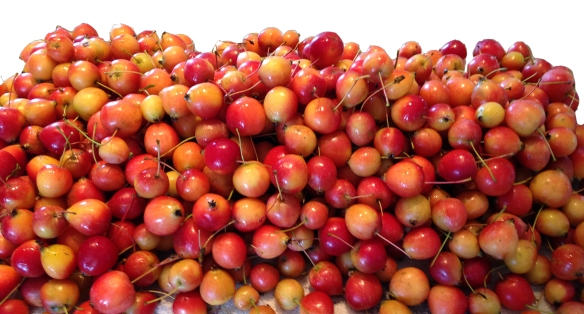 Fall brings a crispness in the air, changing leaves and crab apple pie. Yes, you heard right. Crab apple pie.
Fall brings a crispness in the air, changing leaves and crab apple pie. Yes, you heard right. Crab apple pie.

 pot (I use a deep fry pan and basket), heat one gallon water to boiling and add one-third to half of apple slices, return to boiling and boil for one minute. Transfer apples to a large bowl, cover. Repeat with remaining apples. Next, in a large pot, combine sugar, Clear Jel, cinnamon, nutmeg and cloves. Stir in apple juice and cold water. Cook over medium heat, stirring constantly, until mixture thickens and boils. Add lemon juice and boil one minute, stirring constantly. Remove from heat and stir in apples, mixing well. Spoon into hot quart jars, leaving one-inch head space. Process in water bath canner 25 minutes.
pot (I use a deep fry pan and basket), heat one gallon water to boiling and add one-third to half of apple slices, return to boiling and boil for one minute. Transfer apples to a large bowl, cover. Repeat with remaining apples. Next, in a large pot, combine sugar, Clear Jel, cinnamon, nutmeg and cloves. Stir in apple juice and cold water. Cook over medium heat, stirring constantly, until mixture thickens and boils. Add lemon juice and boil one minute, stirring constantly. Remove from heat and stir in apples, mixing well. Spoon into hot quart jars, leaving one-inch head space. Process in water bath canner 25 minutes.
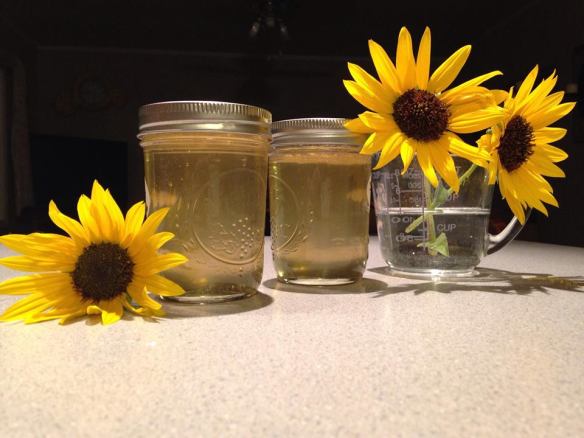
 ’t take long to gather enough petals.
’t take long to gather enough petals. er.
er. After first tasting the jelly, I made the comment that “it tastes like summer.” I look forward to opening a jar when the temperatures are below freezing and there is snow on the ground, just to bring back just a bit of summer.
After first tasting the jelly, I made the comment that “it tastes like summer.” I look forward to opening a jar when the temperatures are below freezing and there is snow on the ground, just to bring back just a bit of summer.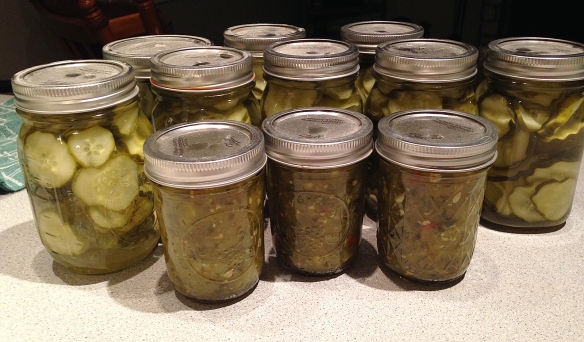
 There are several varieties of mix out there for pickles. I went with the standard dill pickle mix. The relish mix is for sweet relish.
There are several varieties of mix out there for pickles. I went with the standard dill pickle mix. The relish mix is for sweet relish. Blend until they are course pieces, but don’t go so far as to liquify it. Then cook the mixture as directed and pour into the jars and process according to the directions.
Blend until they are course pieces, but don’t go so far as to liquify it. Then cook the mixture as directed and pour into the jars and process according to the directions.